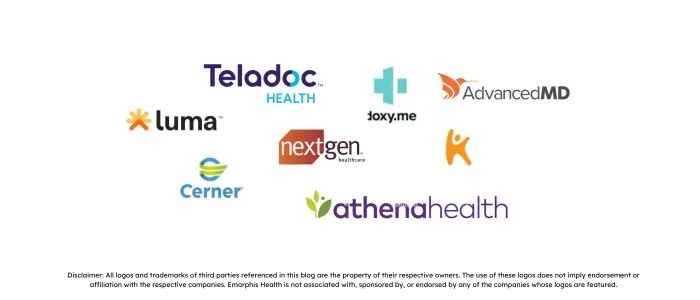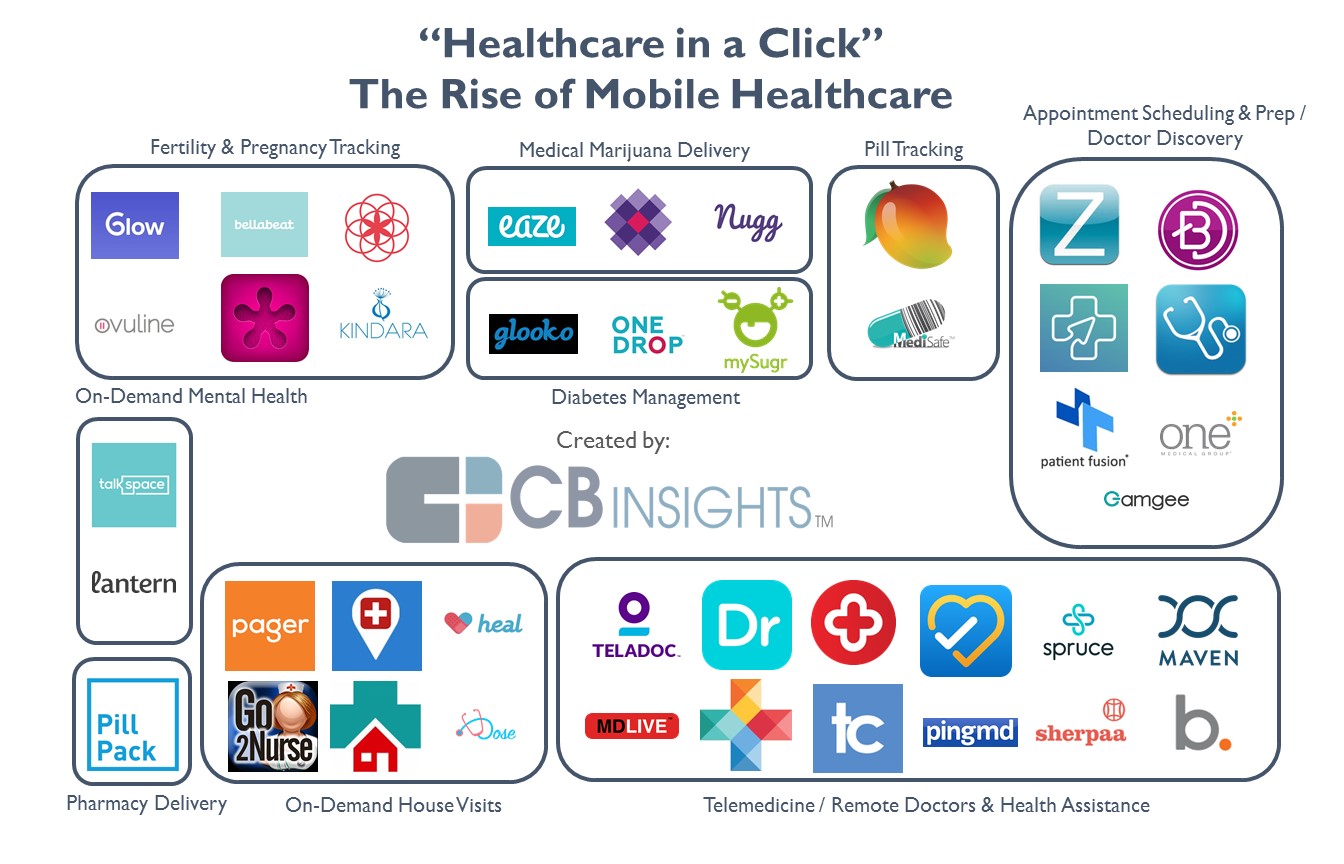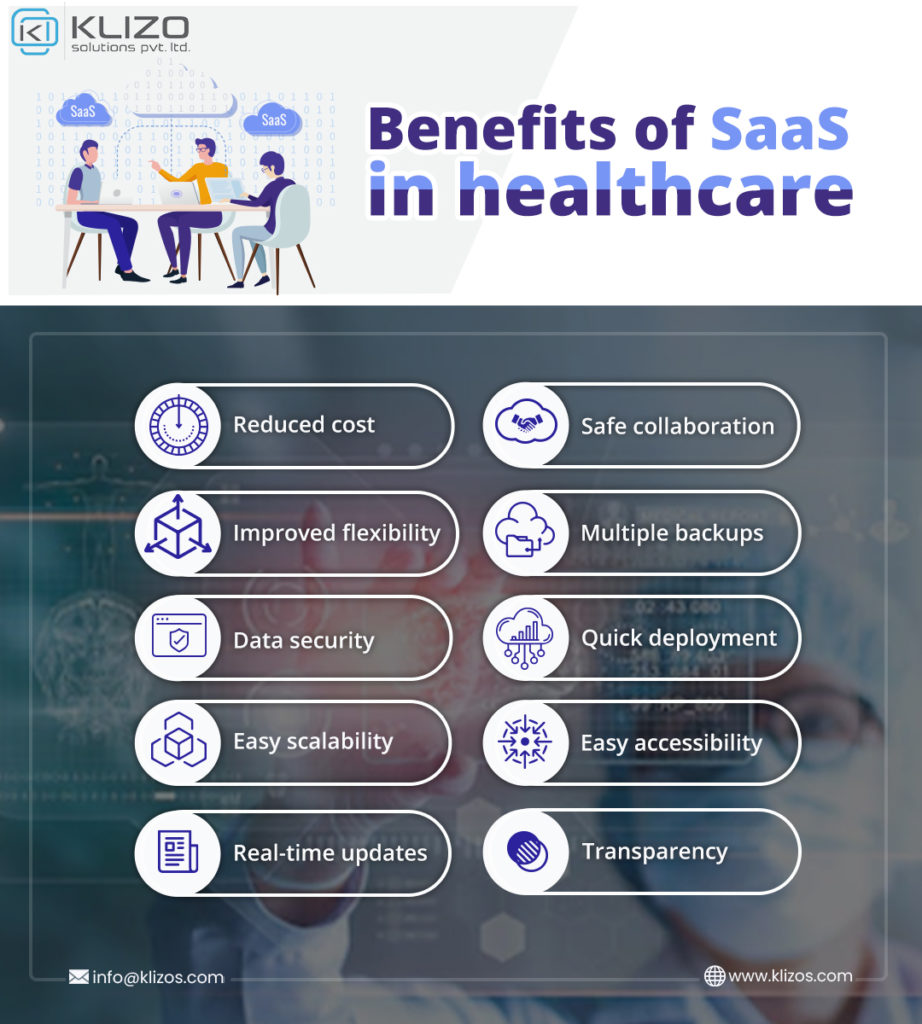What are some current medical SaaS startups?

The healthcare industry is undergoing a transformative shift, driven by the rise of medical Software-as-a-Service (SaaS) startups. These innovative companies are leveraging cloud-based technologies to streamline operations, enhance patient care, and improve accessibility to medical services. From telemedicine platforms to AI-powered diagnostic tools, medical SaaS startups are addressing critical challenges in healthcare delivery, data management, and treatment personalization. As the demand for scalable, cost-effective, and secure solutions grows, these startups are reshaping the future of healthcare. This article explores some of the most promising medical SaaS startups currently making waves in the industry, highlighting their unique contributions and potential impact.
What Are Some Current Medical SaaS Startups?
Medical SaaS (Software as a Service) startups are revolutionizing the healthcare industry by providing innovative solutions that streamline operations, improve patient care, and enhance data management. These startups leverage cloud-based platforms to offer scalable, cost-effective, and accessible tools for healthcare providers, researchers, and patients. Below, we explore some of the most promising medical SaaS startups and their contributions to the industry.
1. Notable Medical SaaS Startups in 2023
The healthcare sector has seen a surge in SaaS startups offering specialized solutions. Companies like Hippo Health, MedCrypt, and PatientPop are leading the way with their unique offerings. Hippo Health focuses on telemedicine platforms, while MedCrypt specializes in cybersecurity for medical devices. PatientPop, on the other hand, provides practice growth solutions for healthcare providers. These startups are addressing critical gaps in the industry, from patient engagement to data security.
2. Key Features of Medical SaaS Platforms
Medical SaaS platforms are designed to be user-friendly, secure, and compliant with healthcare regulations like HIPAA and GDPR. Key features include electronic health records (EHR) management, telemedicine capabilities, patient scheduling, and data analytics. These platforms often integrate with existing healthcare systems, ensuring seamless workflows and improved efficiency for medical professionals.
3. Benefits of Medical SaaS for Healthcare Providers
Medical SaaS solutions offer numerous benefits, including cost savings, scalability, and enhanced patient care. By moving to cloud-based platforms, healthcare providers can reduce IT infrastructure costs and access real-time data from anywhere. Additionally, these platforms enable better patient engagement through features like online appointment booking and telehealth consultations.
4. Challenges Faced by Medical SaaS Startups
Despite their potential, medical SaaS startups face several challenges. Regulatory compliance is a major hurdle, as these companies must adhere to strict healthcare laws. Data security is another critical concern, given the sensitive nature of patient information. Additionally, gaining market traction and competing with established players can be difficult for new entrants.
5. Future Trends in Medical SaaS
The future of medical SaaS is bright, with trends like AI-driven diagnostics, blockchain for data security, and interoperability gaining traction. Startups are increasingly focusing on personalized medicine and predictive analytics to improve patient outcomes. As technology evolves, we can expect more innovative solutions that address the evolving needs of the healthcare industry.
| Startup | Focus Area | Key Features |
|---|---|---|
| Hippo Health | Telemedicine | Virtual consultations, EHR integration |
| MedCrypt | Cybersecurity | Device encryption, threat monitoring |
| PatientPop | Practice Growth | Online scheduling, patient reviews |
What is a healthcare SaaS company?

What is a Healthcare SaaS Company?
A healthcare SaaS (Software as a Service) company provides cloud-based software solutions tailored to the healthcare industry. These companies offer platforms that enable healthcare providers, such as hospitals, clinics, and private practices, to manage patient data, streamline operations, and improve care delivery. The software is hosted on remote servers and accessed via the internet, eliminating the need for on-premise installations and reducing IT infrastructure costs.
Key Features of Healthcare SaaS Solutions
Healthcare SaaS solutions are designed to address the unique needs of the healthcare sector. Key features include:
- Electronic Health Records (EHR): Centralized digital records for patient information.
- Telemedicine Integration: Tools for virtual consultations and remote patient monitoring.
- Billing and Revenue Cycle Management: Automated systems for claims processing and payment tracking.
Benefits of Using Healthcare SaaS
Adopting healthcare SaaS solutions offers numerous advantages for healthcare providers:
- Cost Efficiency: Reduces upfront costs and ongoing maintenance expenses.
- Scalability: Easily adapts to the growing needs of healthcare organizations.
- Improved Accessibility: Enables secure access to data from anywhere, at any time.
Challenges in Healthcare SaaS Implementation
While healthcare SaaS offers many benefits, there are challenges to consider:
- Data Security: Ensuring compliance with regulations like HIPAA to protect sensitive patient information.
- Integration with Legacy Systems: Compatibility issues with existing healthcare IT infrastructure.
- User Adoption: Training staff to effectively use new software systems.
Examples of Leading Healthcare SaaS Companies
Several companies have established themselves as leaders in the healthcare SaaS space:
- Epic Systems: Known for its comprehensive EHR solutions.
- Cerner Corporation: Offers a wide range of healthcare IT solutions, including population health management.
- Athenahealth: Specializes in cloud-based services for medical billing and practice management.
What are healthcare startups?

What Are Healthcare Startups?
Healthcare startups are innovative companies focused on developing new technologies, products, or services to improve the healthcare industry. These startups aim to address challenges such as patient care, medical diagnostics, treatment accessibility, and operational efficiency. They often leverage cutting-edge technologies like artificial intelligence, telemedicine, and wearable devices to create solutions that enhance both patient outcomes and healthcare delivery.
Key Areas of Focus for Healthcare Startups
Healthcare startups typically concentrate on several critical areas within the industry. These include:
- Telemedicine: Providing remote healthcare services to improve access for patients in underserved areas.
- Medical Devices: Developing advanced tools and equipment for diagnostics, treatment, and monitoring.
- HealthTech Software: Creating platforms for electronic health records (EHR), patient management, and data analytics.
- Personalized Medicine: Tailoring treatments based on individual genetic profiles and health data.
- Mental Health Solutions: Offering digital platforms for therapy, counseling, and mental health support.
Technologies Driving Healthcare Startups
Healthcare startups rely on a variety of technologies to innovate and disrupt the industry. Some of the most impactful technologies include:
- Artificial Intelligence (AI): Used for predictive analytics, disease diagnosis, and personalized treatment plans.
- Internet of Things (IoT): Enables connected devices like wearables to monitor patient health in real-time.
- Blockchain: Ensures secure and transparent sharing of medical data.
- Big Data Analytics: Helps in analyzing large datasets to identify trends and improve decision-making.
- Virtual Reality (VR): Used for medical training, patient therapy, and surgical simulations.
Challenges Faced by Healthcare Startups
Despite their potential, healthcare startups face several challenges that can hinder their growth and success. These include:
- Regulatory Compliance: Navigating complex healthcare regulations and obtaining necessary approvals.
- Funding: Securing sufficient investment to develop and scale their solutions.
- Data Privacy: Ensuring patient data is protected and compliant with laws like HIPAA.
- Market Competition: Competing with established healthcare providers and other startups.
- Adoption Barriers: Convincing healthcare providers and patients to adopt new technologies.
Impact of Healthcare Startups on the Industry
Healthcare startups are transforming the industry in numerous ways. Their impact includes:
- Improved Patient Care: Offering more accurate diagnostics and personalized treatments.
- Cost Reduction: Streamlining processes and reducing operational expenses for healthcare providers.
- Increased Accessibility: Making healthcare services available to remote and underserved populations.
- Enhanced Data Management: Providing tools for better storage, analysis, and sharing of medical data.
- Innovation in Treatment: Introducing new therapies and medical devices that were previously unavailable.
What does SaaS mean in medical?

What is SaaS in the Medical Field?
SaaS, or Software as a Service, in the medical field refers to cloud-based software solutions designed to streamline healthcare operations. These platforms are hosted remotely and accessed via the internet, eliminating the need for on-premise installations. In healthcare, SaaS is widely used for:
- Electronic Health Records (EHR): Storing and managing patient data securely.
- Telemedicine: Enabling remote consultations and virtual care.
- Practice Management: Automating administrative tasks like scheduling and billing.
Benefits of SaaS in Healthcare
The adoption of SaaS in healthcare offers numerous advantages, including:
- Cost Efficiency: Reduces upfront hardware and software costs.
- Scalability: Easily adapts to the growing needs of healthcare providers.
- Accessibility: Allows access to data and tools from any location with an internet connection.
Key Features of Medical SaaS Solutions
Medical SaaS platforms are equipped with features tailored to healthcare needs, such as:
- Data Security: Ensures compliance with regulations like HIPAA.
- Interoperability: Facilitates seamless integration with other healthcare systems.
- Real-Time Analytics: Provides insights for better decision-making.
Challenges of Implementing SaaS in Healthcare
Despite its benefits, SaaS adoption in healthcare faces challenges, including:
- Data Privacy Concerns: Ensuring patient data remains confidential.
- Internet Dependency: Requires reliable connectivity for uninterrupted access.
- Resistance to Change: Healthcare providers may be hesitant to adopt new technologies.
Future Trends of SaaS in the Medical Industry
The future of SaaS in healthcare is promising, with trends such as:
- AI Integration: Enhancing diagnostics and patient care through artificial intelligence.
- Wearable Technology: Integrating data from wearable devices into SaaS platforms.
- Personalized Medicine: Leveraging SaaS to deliver tailored treatment plans.
Which company starting with Z is a well known SaaS service provider?
![]()
What is Zendesk?
Zendesk is a well-known SaaS (Software as a Service) provider that specializes in customer service and support solutions. Founded in 2007, the company offers a suite of tools designed to help businesses improve their customer interactions. Here are some key features of Zendesk:
- Customer Support Software: Zendesk provides a ticketing system that helps businesses manage customer inquiries efficiently.
- Omnichannel Support: It allows businesses to interact with customers across multiple channels, including email, chat, phone, and social media.
- Analytics and Reporting: Zendesk offers robust analytics tools to track customer service performance and identify areas for improvement.
Why is Zendesk Popular Among Businesses?
Zendesk has gained popularity due to its user-friendly interface and comprehensive features that cater to businesses of all sizes. Here are some reasons why businesses prefer Zendesk:
- Scalability: Zendesk can scale with your business, making it suitable for both small startups and large enterprises.
- Integration Capabilities: It integrates seamlessly with other popular business tools like Salesforce, Slack, and Shopify.
- Customization: Businesses can customize Zendesk to fit their specific needs, from branding to workflow automation.
Key Features of Zendesk
Zendesk offers a wide range of features that make it a top choice for customer service solutions. Here are some of the most notable features:
- Ticketing System: Centralizes customer inquiries into a single platform for easy management.
- Knowledge Base: Allows businesses to create a self-service portal for customers to find answers to common questions.
- Live Chat: Enables real-time communication between customers and support agents.
How Does Zendesk Improve Customer Experience?
Zendesk is designed to enhance the customer experience by providing efficient and effective support solutions. Here’s how it achieves this:
- Quick Response Times: The ticketing system ensures that customer inquiries are addressed promptly.
- Personalized Support: Agents can access customer history and preferences to provide tailored assistance.
- 24/7 Availability: With features like chatbots and self-service options, customers can get help anytime.
Zendesk's Impact on Business Efficiency
Implementing Zendesk can significantly improve business efficiency by streamlining customer service operations. Here’s how:
- Automation: Automates repetitive tasks, allowing agents to focus on more complex issues.
- Collaboration: Facilitates team collaboration with shared inboxes and internal notes.
- Performance Tracking: Provides detailed reports and analytics to monitor and improve team performance.
Frequently Asked Questions (FAQ)
What are some notable medical SaaS startups in 2023?
In 2023, several medical SaaS startups have gained attention for their innovative solutions. Companies like Huma focus on remote patient monitoring and digital clinical trials, while Medable specializes in decentralized clinical trials and patient engagement. Another notable startup is Doximity, which offers a platform for healthcare professionals to collaborate and share medical information securely. These startups are leveraging cloud-based technologies to improve healthcare delivery and patient outcomes.
How do medical SaaS startups improve healthcare efficiency?
Medical SaaS startups enhance healthcare efficiency by providing scalable software solutions that streamline administrative tasks, patient management, and data analysis. For example, Zocdoc simplifies appointment scheduling, while Athenahealth offers tools for electronic health records (EHR) and revenue cycle management. By automating repetitive tasks and enabling real-time data access, these startups help healthcare providers focus more on patient care and less on paperwork.
What challenges do medical SaaS startups face?
Despite their potential, medical SaaS startups face several challenges, including regulatory compliance, data security, and integration with existing healthcare systems. Ensuring compliance with regulations like HIPAA in the U.S. or GDPR in Europe is critical. Additionally, startups must address concerns about data breaches and build trust with healthcare providers and patients. Overcoming these challenges requires significant investment in technology and expertise.
What trends are shaping the future of medical SaaS startups?
The future of medical SaaS startups is being shaped by trends such as artificial intelligence (AI), telemedicine, and personalized medicine. Startups like Butterfly Network are integrating AI into medical imaging, while others are developing platforms for virtual consultations and remote diagnostics. Additionally, the rise of wearable technology and IoT devices is creating new opportunities for startups to offer data-driven healthcare solutions. These trends are driving innovation and transforming the healthcare industry.
Deja una respuesta

Entradas Relacionadas